The whole truth about stop loss and take profit. How to cut losses and make profits grow
In this section, we will talk about orders that are used to limit losses on an open transaction in the event that the alleged scenario turned out to be erroneous in orders to take profit on an open transaction.
Let's start with a stop order (stop-loss). It is he who guards the trading account, fixing losses at the calculated level, and not allowing them to increase to a catastrophic value. It is set below the market price (position opening price) in case you buy and, accordingly, above the market price if you sell.
The rules for setting stop-loss are quite simple. Most often, it is set at a critical level (the so-called level, after which the price changes the settlement scenario), which is either the level of support or resistance. Sometimes a stop loss is set without looking at the chart and serves only to limit losses.
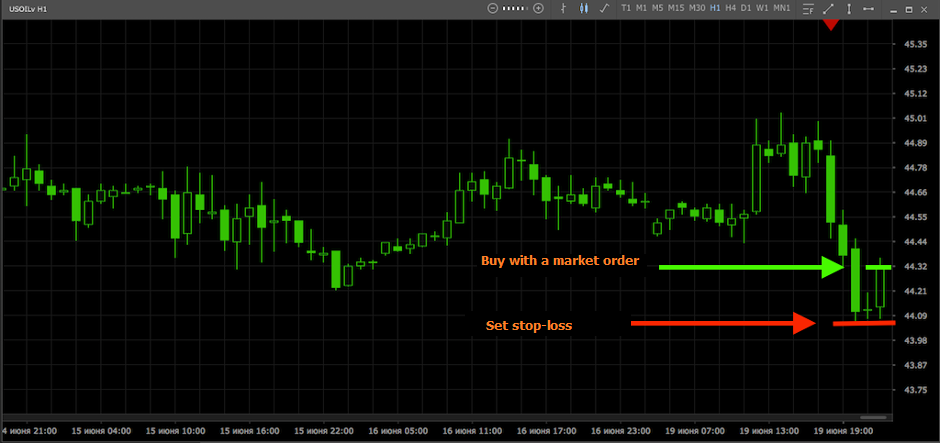
In the figure below, we buy with a market order (green line), after the price rises from the support level, below which a stop-loss order (red line) is installed.

Entering the market turned out to be erroneous and the price movement in the opposite direction more than five times exceeded the level of stop-loss loss.
The following example is the use of stop-loss when trading in flat (movement in a range without a pronounced direction). We define on the chart the levels of support (green line marked by an arrow) and resistance (red line marked by an arrow). We place a pending buy order (in the figure a short green with a directional arrow), with stop-loss (a yellow short line with a directional arrow) below the support level.
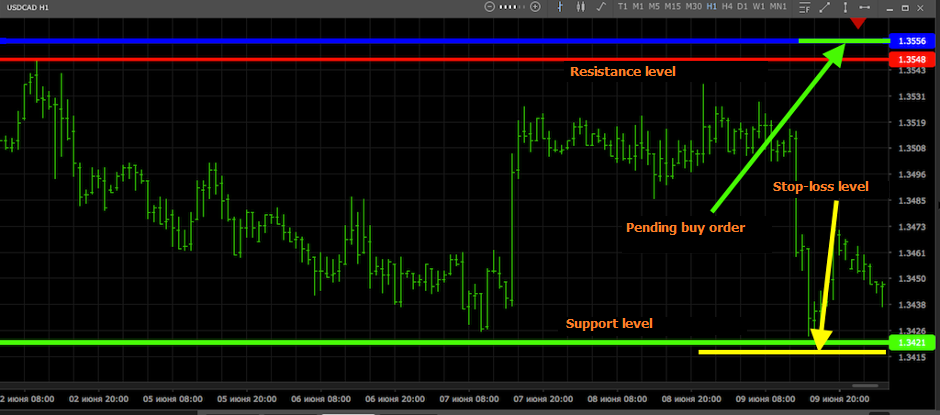
From the opposite side we place a pending sell order. The figure shows a short red line with an arrow. We also set the stop-loss above the resistance level (a short yellow line with a directional arrow).
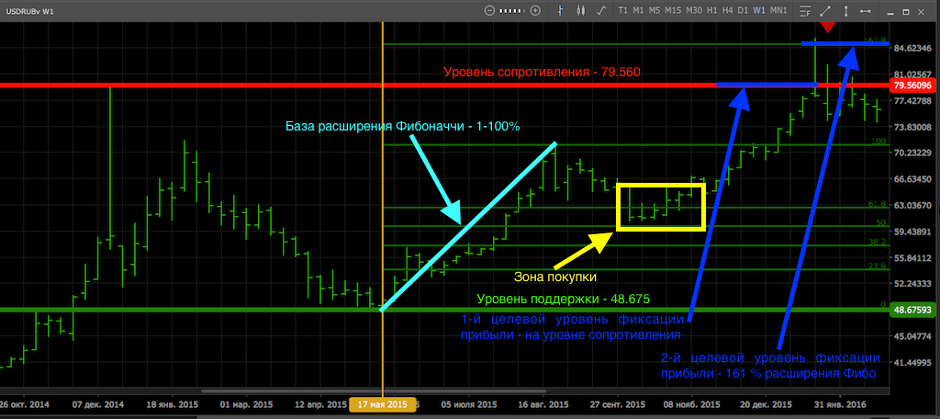
In this situation, the price went down and the pending order became a market order, and stop-loss can be transferred to breakeven when the price moves in the direction of an open position.
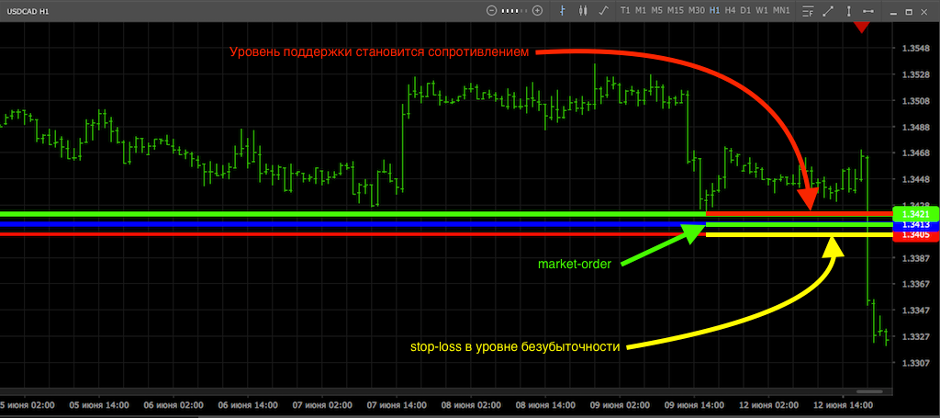
Next, let's talk about the take profit order. This is the name of a pending order placed in the direction of the expected direction of the price movement relative to the open position (if you work in the long higher than the open position, if in short then lower) and its task is to fix the profit at a time when you are absent and not busy with trade. An order is placed similarly to the examples described above when placing pending orders. According to the recommendations of risk management, the ratio from the market price to the stop-loss level and take-profit level is at least 1 to 2. That is, if you work at a price that is comparable in the range of the move and the volume of the transaction, completing three transactions, two of which will be unprofitable and one profitable you will not incur a loss. Take-profit orders are usually issued either at a strong level or at a prospective one, if the price is trending and there are simply no strong levels in its path. In rare cases, take profit is set only based on risk management, or in case of psychological instability of the trader, “forbidding” himself to close the position earlier.
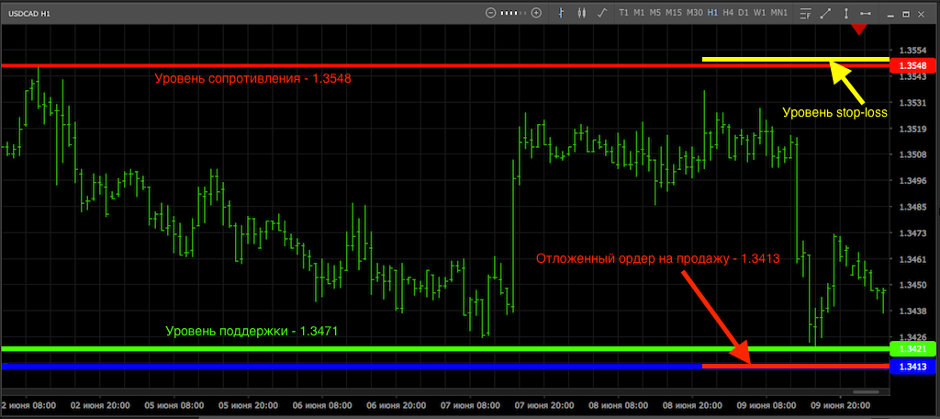
As an example, consider the USDrub pair chart. On the graph, we see the end of the formation of the support level on the date of November 17, 2015 (the vertical line is light brown in the figure). The resistance level was formed earlier. We consider a scenario in which the market entry is made in the buy zone (a square and a yellow arrow) based on the Fibonacci extension levels. Possible take profit in this case can be determined in two ways. (Blue arrows and text on the graph)
The first option - profit taking is made on the way to the resistance level. The second - the Fibonacci extension level is taken as a basis.

 Russian
Russian  中文
中文  العربي
العربي  Bahasa Indonesia
Bahasa Indonesia